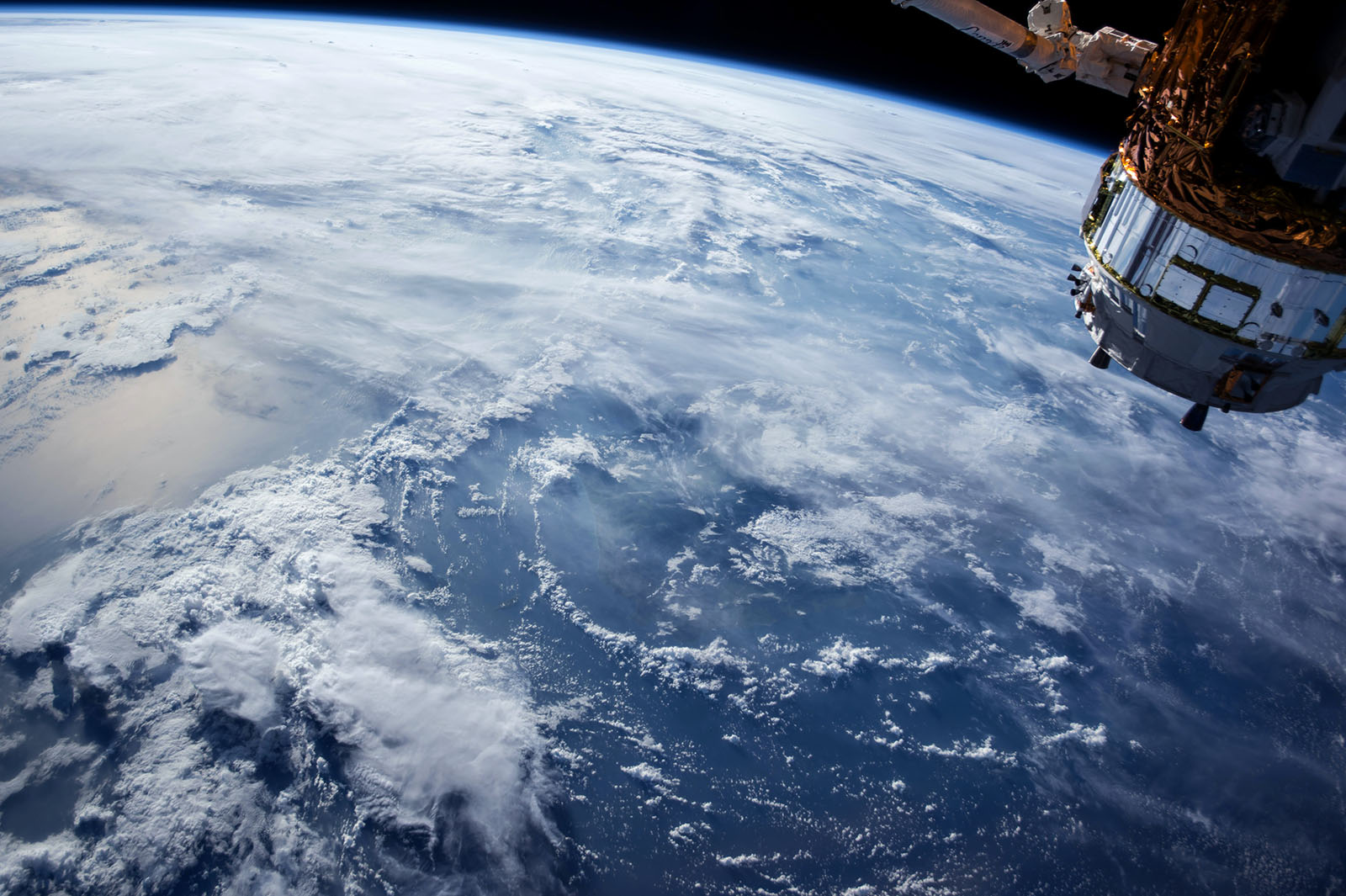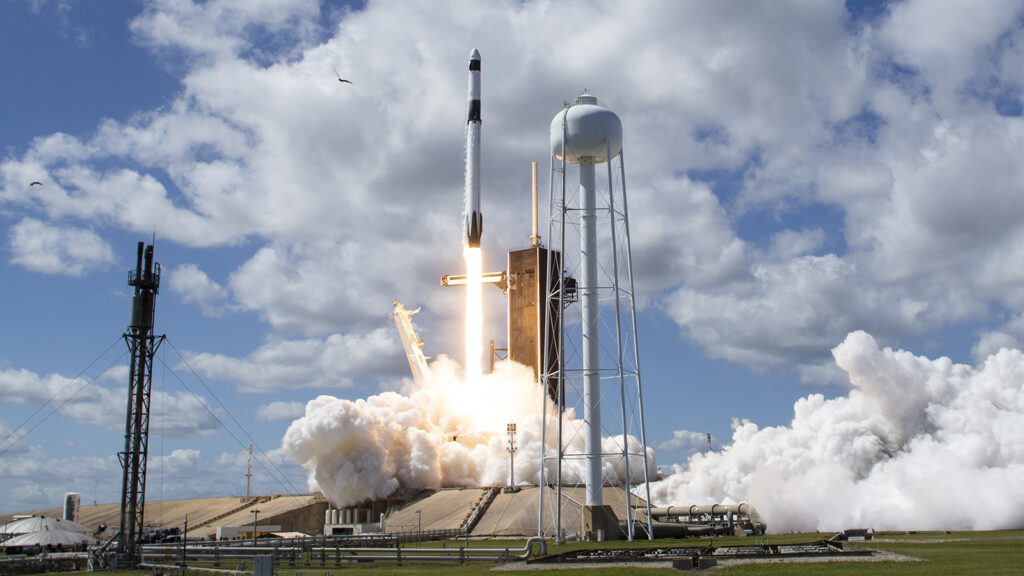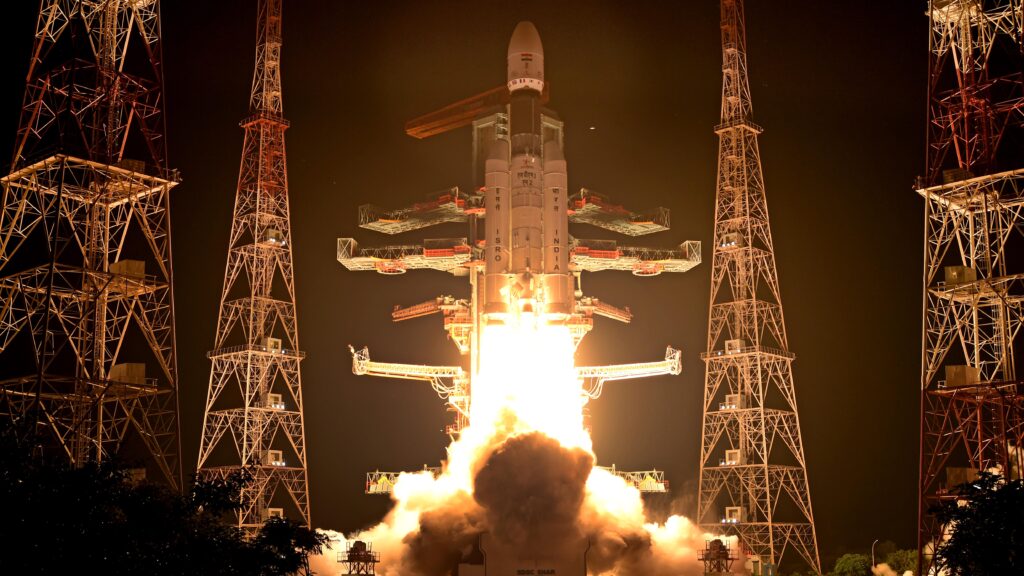
A view of Earth and a satellite, taken by NASA. The notion of space tourism might seem “frivolous” at a time when humanity is battling a global pandemic, but the days of suborbital travel are edging closer.
Commercial space flights could happen as soon as late this year, despite the global recession fueled by the novel coronavirus. That’s the prediction of Jeffrey Manber, CEO of Nanoracks, a private space company working on the commercial utilization of space.
Space travel has been on the agenda for more than a decade, with the billionaire club launching ambitious projects to make space tourism — once a pipe dream imagined in cartoons — a reality. After years of planning and preparation, companies such as Virgin Galactic, Blue Origin and SpaceX are “finally there,” according to Manber.
The notion of space tourism might seem “frivolous” at a time when humanity is battling a global pandemic, Manber acknowledged, but the days of suborbital travel are edging closer.
BRINK editor Antoun Issa spoke with Manber about the next foray into space and what it will mean for the world going forward. Will space travel be a luxury for the mega-wealthy? Can space projects help with important life science and biotech research? Will renewed global interest in the moon exacerbate geopolitical rivalries? Manber addressed those questions and more in the conversation below.
Space Tourism … How Far Are We?
ISSA: The world has heard a lot about the private space race over the years. How far are we from seeing the first commercial flight into space?
MANBER: At long last, we’re on the cusp of space tourism. In many ways, it reminds me of that sign at the local bar that says “Free beers tomorrow.” It always seems like it’s tomorrow, but I think that Virgin and Blue Origin are finally there, after more than a decade. And by the end of this year and beginning of next year, we’ll start to see high-net-worth people, men and women, going to suborbital space. And that’s very exciting.
ISSA: How is Nanoracks helping these companies get to space?
MANBER: At Nanoracks, we’re hardware-agnostic. We love working with everybody. And as we’re getting ready for this new era of space tourism, the most exciting thing that we’ve developed is the Astronaut Training Program, from hatch opening to hatch closing. So if you fly up with SpaceX or Boeing or the Russians, and you’re going to the International Space Station, we create a program around your interests. If you’re a musician, we can make sure the guitar is on the space station and everything’s ready for you. If you’re a scientist and you want to do research, we can help prepare the hardware and make sure everything’s fine. If you’re a teacher and you want to educate, we can arrange everything for you. So we’re working to make sure that the visitors to space who are not professional astronauts have the best program they can possibly have.
All Eyes Are on SpaceX
ISSA: What are currently the great impediments to getting a commercial operation running?
MANBER: Right now, the impediment, for once, is not regulation. The U.S. government has been very good in working with the companies in the development of space ports and understanding that this is a high-risk new venture. The problem has been technical. And it’s just taken folks longer to develop. On the part of Jeff Bezos and Blue Origin, he’s been working at this for over a decade. So too has Sir Richard Branson. It’s the technical hurdles. To develop, even for suborbital space, is not easy.
ISSA: How much of the technical holdup is ensuring passenger safety?
MANBER: Right now, the cost of doing anything in space is going up. The cost of insurance in space is going up. It has to do with the two satellite mishaps in the last year. And they were both big and expensive satellites, and so it’s driving up the cost.
Frankly, to be really honest, it really depends on SpaceX. What SpaceX does is what the public is watching. It will all change when the first astronauts go up. And we’re looking for SpaceX to launch in May with a NASA crew, for the first time on American soil since the end of the shuttle program. And the eyes of the country and the world will be on those missions.
Access to Space: Just for the Mega Rich?
ISSA: Cost projections for going into space, as you’ve alluded to, are prohibitive to today’s average flyer. Is space travel just a luxury option for the top 1% of the world, or do you foresee a point where moms and dads can go on a space trip?
MANBER: First off, let me say that this interview is during a period when the world is in quarantine. I have some concerns that the whole concept of suborbital space tourism will begin to seem frivolous. And I think companies will be flying by the end of this year. But the market — what’s the market now and the PR around space travel? I do have some concern that taking a four-minute ride into space for $300,000-$400,000 will seem to go against the grain of the mood of people when we are out of quarantine.
But to answer your immediate question, Mom and Dad can take a three-day cruise right now or a 14-day trip to Antarctica. And I’m hopeful that as the industry matures, there will be different gradients, different ways you can do it. The price will come down. You’ll be able to do high-altitude balloons and have a champagne dinner watching the curvature of the Earth. If you want a real blast, you’ll go up in Blue Origin’s New Shepard or on the Virgin Galactic. You’ll soon be able to go with SpaceX and orbit the Earth and not go anywhere, but just orbit the Earth for several orbits and come down. I’m hopeful that there will be opportunities at different price points and different experiences. But it may take longer with the market, given the experience the world is going through right now.
There’s No Such Thing as Space Travel Without Government Support
ISSA: How do the private and public sectors interact in developing these space programs? Is it true that the private and public sectors are more partners than competitors?
MANBER: All emerging markets have government help. There was once a Mr. Boeing, there was once a Mr. Grumman, there was once a Mr. Lockheed, and they were entrepreneurs. And they had government help. Mr. Boeing got government help through a contract to fly the mail. And so there’s always been a public-private partnership. And companies like Nanoracks and even companies like SpaceX were launched through government contracts. Without the government as a customer, without government help, no emerging markets — including space — get off the ground. No pun intended.
Pandemics and space exploration are two areas where it’s best that nations work together, so to do space exploration, you need international cooperation.
We need the government as a partner. We have them as a partner in the industry. We have them as a partner at Nanoracks, and we’re appreciative of that. Having said that, there is that line you want to maintain. You don’t want the government designing your hardware. You don’t want the government creating onerous regulations. And at the same time, on the government side, they don’t want to be the only customer. They want to be one customer of many. So it’s a very healthy relationship. It’s a nuanced relationship. It’s a complex relationship. But there is no such thing as a private space company doing it without a government.
It’s similar to commercial airlines. The government builds the airports and federal workers maintain safety, but private companies make the planes and sell the tickets. So in aviation and in space there’s a very deep public-private partnership.
The Benefits of Space for Life Science and Biotech Research
ISSA: One of your stated missions is to use the space environment to conduct research on life sciences, biotech and agriculture. How can the space industry play a critical role to research, noting our current pandemic crisis?
MANBER: I’ve been fascinated for a long time by the incredible research being done in space, where you see entirely new microbes and bacteria and seeds created in the harsh environment of space. Whether that’s due to the zero gravity, whether that’s due to the high and differing levels of radiation, no one is really certain. But we are certain that by growing seeds and creating microbes and bacteria in space, we get some that are created in space. And you know what? Some of those can thrive in the deserts of Earth.
I’m absolutely committed to using our resources at Nanoracks to take the harsh environment of space and see if indeed we can green the Earth’s deserts. That’s an important part of climate change. As our climate becomes harsher and hotter in many parts of the world, we need to have crops that can survive in harsh environments.
In terms of the pandemic and the horrific situation we’re in today, there are people who have been using the space environment to create new types of vaccines and seeing that in space, you get a more harsh response from bacteria and viruses. We don’t know yet if that can help us. It certainly can’t help us with the coronavirus; we’re moving faster on the Earth than we ever can in space. But I am convinced that the space environment is a future tool to be used to solve some of these problems.
Coronavirus and the Space Industry
ISSA: Speaking of the coronavirus, how is the current crisis affecting the space industry?
MANBER: First I’ll speak about Nanoracks, and then the industry. At Nanoracks, 90% of my employees, of the team, are working at home. But I have a core group at our shop in Houston working on key projects that expect to fly this year. The biggest one is our Bishop Airlock, which will be the largest commercial addition to the International Space Station to date. It’s launching on SpaceX-21 at the start of November. So, we have a core team that’s working very carefully in the shop now. We’re taking all the precautions that we can, but it has to go forward. I will say that everybody working is volunteering — I have not ordered anybody into the shop. We made working in the shop available for younger folks who chose to volunteer.
But it’s affected us in that we had a lot of university payloads that were supposed to fly at the end of the summer and in the fall, and all the universities have shut down. We’ve lost all those payloads and a whole bunch of commercial payloads. We’ve taken a big hit on this. I think we’ll get through it — the scheduled launches are still taking place. Our mission control room, we call it the bridge, is being staffed, and we had astronaut operations a few weeks ago for our customers. And then just a few days ago, we had payloads return on the Dragon of SpaceX and were able to get them back to our customers by using, in this case, delivery services. And so we’re open for business and we’re going forward.
ISSA: And the industry?
MANBER: In general, the space industry comes out of this less affected than our friends in the restaurants and hotels and all those businesses. Because No. 1, the government has deemed us essential. And two, most of our revenue is still B2G or B2B. We’ve taken a big hit at Nanoracks in our commercial business, but we can overcome it. Most of the industry is not B2C, at least until space tourism becomes operational. Longer term, the launches are going fine. Some launches have been delayed, such as Rocket Lab. But assuming this is just a few months, I think the space industry is positioned very well to continue to grow.
Renewed Global Interest in the Moon
ISSA: We need to talk about the moon, and this constant fascination everyone has with traveling to the moon. There’s renewed interest to get there again, with the U.S. Vice President Mike Pence tasking NASA to put boots on the moon by 2024. Do you think this will happen? And if it does, will private actors get there first?
MANBER: Well, it’s going to be a public-private partnership. America is returning to the moon; the only question is when. There is still a little question of how, but we’ve seen that, for example, NASA during the quarantine awarded SpaceX with a major contract on cargo for its Lunar Gateway space station.
There is commitment from the White House and from Congress, but they are not as focused on the date. I believe that we now see that with everything we’ve learned in low-Earth orbit, it’s time for the United States to return to the moon. And for we, as a people throughout the world, to go to the moon and onto Mars. It’s our destiny.
We’ve lacked political support before, and we have it now in the United States. There will be bumps in the road. You saw there was a lot of international concern about President Donald Trump’s executive order saying that the U.S. will not be following the Moon Treaty. I’m not sure of the exact details, but it implies that the moon’s resources could belong to the private sector in some way. You can have private ownership. The U.S. has always said that you can have private ownership of the moon. And I think like the North Pole and the Arctic Circle, this is going to be an area of contention as to the resources countries can take and own. It will be a very important debate and we’ll see how it turns out.
International Competition or Cooperation in Space?
ISSA: Right, and that puts into question whether international players are going to compete or cooperate in space. Which way do you see it going?
MANBER: Pandemics and space exploration are two areas where it’s best that nations work together. That’s my quote for this interview. It’s just true. To do space exploration, you need international cooperation. I am so disappointed that political barriers were put in place by the U.S. to prevent us from being more involved in the Chinese rover project on the far side of the moon. Returning to the moon, I believe, will be international. I believe it will involve Europeans, Russians, Chinese, Indians and developing programs like that in the UAE.
But where the U.S. comes down is not wanting other nations to be in the critical pathway — i.e., top-level decision-makers in a collaborative setting where decisions could be made contrary to U.S. interests. And we learned that lesson a few decades ago when building the International Space Station with the Russians — I was one of the players, I worked on the Russian side during that period, and I’m the only American to ever work on the Russian side of the human space program, to my knowledge — and the Russians were in the critical pathway. The lesson that the Americans took from that is, going forward, we’re very pleased to work with international colleagues, but we want to make sure that we remain in the critical pathway.








